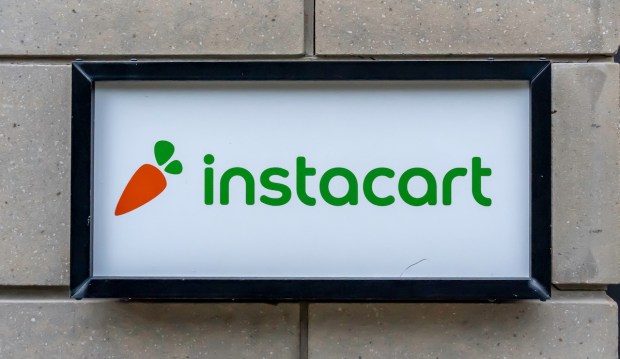
Instacart is on a partnership spree, expanding its user base by offering grocery benefits through a range of healthcare institutions and other businesses.
The company announced its latest such collaboration in a Tuesday (Oct. 24) press release. It is working with Wellness West, a coalition of Chicago health organizations, to provide eligible members a $79 monthly grocery stipend through Instacart’s Fresh Funds program, which enables providers ranging from employers to health insurance companies to offer grocery benefits. The stipend allows for the purchase of qualifying “nutritious” foods such as fruits and vegetables for delivery.
“Through Instacart Health, we’re using the power of our technology to bridge the gap and ensure more families can put wholesome foods on their tables,” Sarah Mastrorocco, vice president and general manager of Instacart Health, said in the release.
The move is part of Instacart’s ongoing push to capture the spending of consumers who might not otherwise be able to afford grocery delivery. The company has been expanding its acceptance of Electronic Benefits Transfer (EBT) for Supplemental Nutrition Assistance Program (SNAP) benefits, reaching all 50 states and Washington, D.C., to be available to close to 95% of households enrolled in the program.
Additionally, earlier this month, the aggregator announced a partnership with Mount Sinai Solutions to provide a grocery benefit program for post-operative and postpartum patients, as well as a collaboration with FinTech InComm Payments’ healthcare unit to offer members grocery and over-the-counter items for delivery.
These moves come as Instacart’s consumer business’s sales growth slows. As the company shared in its Form S-1 filed with the Securities and Exchange Commission (SEC) before its initial public offering (IPO), the aggregator saw 303% growth in gross transaction value (GTV) between 2019 and 2020, 20% the following year and 16% the year after that. However, in the first two quarters of this year, it only increased 3% and 6%, respectively.
There is demand for online grocery, but the high costs of the channel can be a barrier, such that benefits-focused partnerships of this kind can help expand accessibility and enable players in the space to reach new demographics.
Research from PYMNTS Intelligence’s study last year, the “ConnectedEconomy™ Monthly Report: The Gender Divide Edition,” found that higher-income consumers are more likely than lower-income consumers to order groceries online.
Fifty-five percent of men and 35% of women with annual incomes exceeding $100,000 reported using same-day delivery aggregators such as Instacart to purchase groceries, while 27% of men and 20% of women whose incomes were lower than $50,000 said the same. By making eGrocery accessible to more consumers, Instacart hopes to drive up adoption among lower-income consumers.
Many consumers want to buy more groceries online if given the option. PYMNTS Intelligence’s report “Tracking the Digital Payments Takeover: Catching the Coming eCommerce Wave,” created in collaboration with Amazon Web Services (AWS), revealed that 32% of shoppers said they are very or extremely likely to increase their online grocery purchases in the next year.